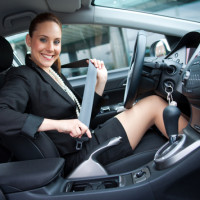Federal Car Safety Group Modifies Rating System

It is important to be able to trust that the car you buy is the safest one for you to transport yourself and your family out on the road. Savvy consumers try to find an objective voice they can trust to help guide their search for the smartest, safest vehicle they can buy, along with a guide on which safety features are worth spending extra to have, and which might not be. The federal government’s National Highway Traffic Safety Administration (NHTSA) has now revised its safety rating criteria to reflect recent advances in new car technology and crash avoidance, which should result in greater implementation of those technologies in new cars.
The NHTSA has long been rating the safety of cars available to American buyers under its New Car Assessment Program. Annually, the NHTSA provides safety ratings to each new car on the market, basing its rating off of three different crash tests. The new rating system, which the NHTSA anticipates finalizing by the end of 2016, will now incorporate both new testing technology, and a rating of different safety criteria. The NHTSA will incorporate a front oblique test crash into its evaluation criteria, a test that involves catching the tested car at an angle at an overlap with another car or object, which has proven to be a weak spot in tested vehicles and a common source of injury crash. The testers will also now use more advanced test dummies, as well as child-sized test dummies that more accurately reflect the sorts of injuries children might experience in a crash. Further, reviewers will now add a rating for the safety of pedestrians who are involved in a crash with a tested vehicle, and the level and degree of injury those individuals can anticipate experiencing. Additionally, the overall safety of the vehicle will now involve a rating of the crash-avoidance features installed in the vehicle, including automatic braking, backup cameras, and lane departure warnings.
When the NHTSA announces these sorts of changes in review criteria, manufacturers often begin to incorporate new safety technology in advance of the implementation of the revised criteria. Since the new safety standards are expected to be issued in time for use on new cars for the model year 2019, consumers can expect to see these improved technologies becoming more prevalent in the next couple model years.
If you or a loved one have been hurt in a crash in New Jersey, contact the experienced and trial-ready Wayne personal injury law firm Massood Law Group for a consultation on your case, at 1-844-4MB-HURT.

